Winner of 1974 Design Council Award
The AC1 Preamplifier and AP1 Power amplifier were Lecson’s initial products are revered by Lecson collectors worldwide today both their styling and performance.
The AC1 Preamplifier and AP1 Power amplifier were Lecson’s initial products are revered by Lecson collectors worldwide today both their styling and performance.
Typically they are sold as sets on eBay, generally for $400-$800 depending on condition. Original price for AC1 was 110 pounds plus VAT. Original price for the AP1 was 85.50 pounds plus VAT.
 To understand what a revolution in design the Lecson AC1 and AP1 were compared to their contemporaries requires a quick look at the Armstrong Design Council award from a few years earlier.
To understand what a revolution in design the Lecson AC1 and AP1 were compared to their contemporaries requires a quick look at the Armstrong Design Council award from a few years earlier.
Lecson Design Council Award Tribute Page: ”http://vads.ahds.ac.uk/large.php?pic=2541A&page=1&mode=boolean&words=allen&idSearch=boolean&vadscoll=Design+Council+Slide+Collection”
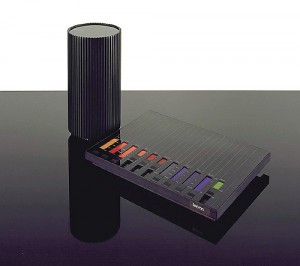 The AC1 Preamplifier and AP1 Power amplifier were Lecson’s initial products are revered by Lecson collectors worldwide today both their styling and performance.
The AC1 Preamplifier and AP1 Power amplifier were Lecson’s initial products are revered by Lecson collectors worldwide today both their styling and performance.
Typically they are sold as sets on eBay, generally for $400-$800 depending on condition. Original price for AC1 was 110 pounds plus VAT. Original price for the AP1 was 85.50 pounds plus VAT.
Stan Curtis comments,
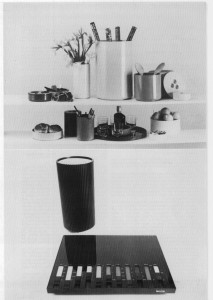 “The original AC1 had a top panel made from strips of thin glass held onto the case by double-sided tape. Unfortunately when the temperature rose the adhesion was reduced and the glass moved or fell off so it was eventually replaced by a one-piece acrylic top.
“The original AC1 had a top panel made from strips of thin glass held onto the case by double-sided tape. Unfortunately when the temperature rose the adhesion was reduced and the glass moved or fell off so it was eventually replaced by a one-piece acrylic top.
Instead of conventional switches the AC1 used bar magnets attached to the slider controls; to operate glass encased reed switches which in turn applied voltages to junction FET switches. This was a very nice arrangement but proved to be a production nightmare. First all the FETs had to be pre-measured and matched into sets and secondly aligning the magnets and the reed switches was a slow tedious business.
 The AP1 used a new balanced push-pull circuit and produced a sound quality that was much liked at the time but it did suffer from unreliability mainly because of failures of the GE driver transistors. AP1 was designed by Bob Stuart. It sounded really nice and smooth but was difficult to manufacture.
The AP1 used a new balanced push-pull circuit and produced a sound quality that was much liked at the time but it did suffer from unreliability mainly because of failures of the GE driver transistors. AP1 was designed by Bob Stuart. It sounded really nice and smooth but was difficult to manufacture.
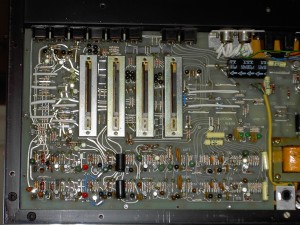 The input stage comprised of a balanced pair of long-tailed pairs of transistors and in order to get the distortion within the published specification both pairs had to have similar performance and this could be difficult to achieve and could involve having to change a lot of transistors.
The input stage comprised of a balanced pair of long-tailed pairs of transistors and in order to get the distortion within the published specification both pairs had to have similar performance and this could be difficult to achieve and could involve having to change a lot of transistors.
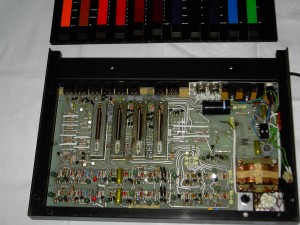 This amplifier also proved to be rather inconsistent. If you got a good one it would last forever yet others failed in days. Particular trouble points were the driver transistors and the small tantalum bead capacitor in the feedback network.
This amplifier also proved to be rather inconsistent. If you got a good one it would last forever yet others failed in days. Particular trouble points were the driver transistors and the small tantalum bead capacitor in the feedback network.
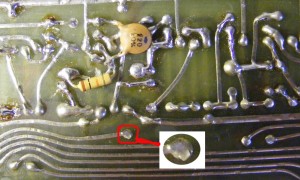 I joined Lecson I made some changes to the AP1 circuit including changing the driver transistor type. However I no longer have any documentation and cannot remember the other changes.
I joined Lecson I made some changes to the AP1 circuit including changing the driver transistor type. However I no longer have any documentation and cannot remember the other changes.
 Unfortunately Lecson failed just as the first batch was about to be delivered. When I bought the assets of Lecson I sold the completed amplifiers to enthusiasts then published the design in “Electronics Today” as the “System A amplifier” and sold the remaining parts as kits. Some years ago the publishers told me it was their most popular article ever and it was re-printed in different digests four or five times.
Unfortunately Lecson failed just as the first batch was about to be delivered. When I bought the assets of Lecson I sold the completed amplifiers to enthusiasts then published the design in “Electronics Today” as the “System A amplifier” and sold the remaining parts as kits. Some years ago the publishers told me it was their most popular article ever and it was re-printed in different digests four or five times.
The AC1 remained unchanged most of its life. The first batch had tops made from strips of thin glass. This looked good but was hopelessly impractical and the glass was quickly replaced a by a one piece acrylic top which was screen-printed. Minor changes and component variations were made but essentially it performed well apart from the rather poor headroom of the phono cartridge input.
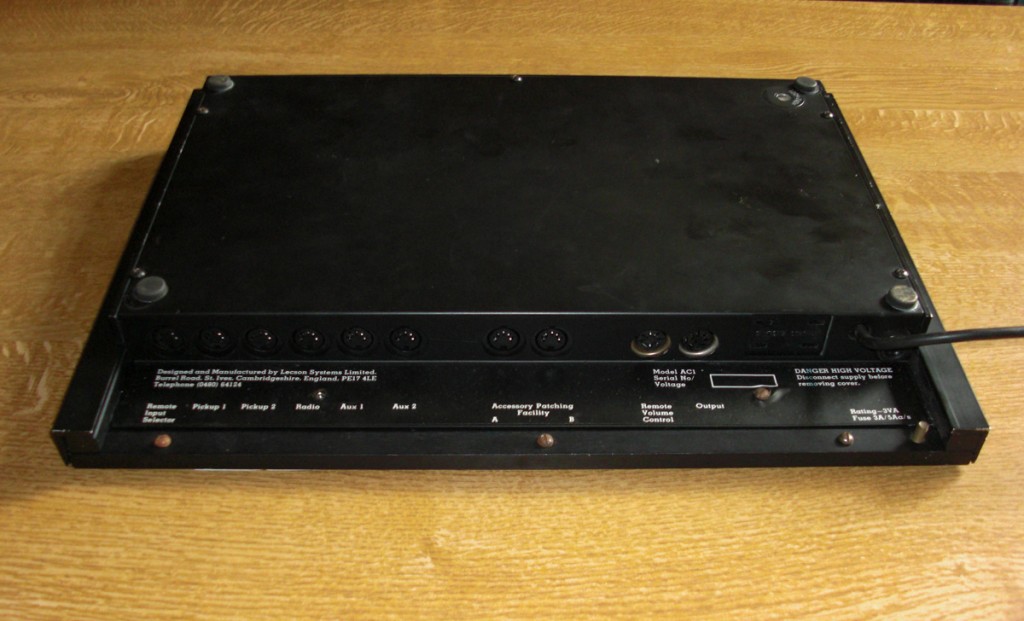 Of course the production managers (first “Pherdie” then Derek Sutton) both hated the product because it was hard to manufacture needing selection of FETs and tantalum capacitors; a lot of mechanical adjustment and with acrylic tops that marked easily so that there were too many rejects.
Of course the production managers (first “Pherdie” then Derek Sutton) both hated the product because it was hard to manufacture needing selection of FETs and tantalum capacitors; a lot of mechanical adjustment and with acrylic tops that marked easily so that there were too many rejects.
It was not possible to update the AC1 because somewhere along the line the original artwork for the board had been lost and boards were just re-ordered from the board maker who had a photographic plate for the design. In those days PCBs were laid by hand using black or red tape and a scalpel. I certainly didn’t relish trying to relay the original double-sided board. It would be far more productive to design a new pre-amplifier and a new board.
I had begun work on a replacement which drew heavily on the Cambridge Audio Classic with its use of hybrid circuits and incorporating a phono stage with 50 dB of headroom but apart from one “chewing gum and string” prototype this one never saw the light of day and the design work ended when I left Lecson to start Mission. (Stan Curtis)
The circuitry of the pre-amplifier (AC1) is designed to the technically very respectable figures of 70dB signal-to-noise ratio. Taking pre- amplifier and power amplifier together, distortion is limited to about 0.02 per cent from 30Hz to 20kHz.
For this performance, the power output is rated at 35W per channel driven into an 8 Ohm load; maximum power is 58W a channel and a new version of the power amplifier (AP2) raises this figure to 100W making it one of the most powerful units available. At these powers, separation of pre-amp and power amp makes good technical sense: more power means more heat which might, in a single enclosure, damage the pre-amplifying circuits.
Industrial design assists and illustrates the electronic concept: the casing of the cylindrical power amplifier – finned matte black aluminium – provides a natural radiating heat sink.
But the designer’s most striking achievement is the 1.25 inch shallow preamplifier, fitted with colour-coded slide controls in place of conventional knobs, set between strips of glossy Perspex (an original plan to use black glass was discarded). Lecson hopes it has eliminated the dust-damage problems associated with earlier slide control amplifiers. Watt black aluminium extrusions make up the sides of the enclosure.
So far as I can remember none of the AC1 boards ever had a solder mask. When I got to Lecson the original AC1 artwork had “gone missing” so we had to manufacture boards using the photographic negatives and no changes were made. Early boards did use rivets to connect the top & bottom layers
Most of the metalwork was anodised black but as a result the colour of every piece looked different so the finished product would have looked different. Therefore a top coat of satin black paint was added; using aerosol cans of paint!”
The Interconnect Cable
This custom cable is available from one of our Lecson Audio Group members (Tim). Rather than try to make one yourself, we strongly recommend contacting him first. The amplifier requires not only a right angle DIN connector, but the pins are offset.
Member Graham writes,
“My AP1 also came with a Test Certificate – a quality card which is dated March 1975 although I didn’t get my amp until late Summer 1976. I think the my local retailer, HIFI Consultants of Peterborough, bought a batch as part of Lecson Audio’s bankruptcy and these went back to Lecson Systems to be checked over by Stan and his team before delivery. I remember having to wait for it to come back from Lecson – whoever did it obviously did a good job as it has only failed twice in 30 years+.”
Reference Material
Lecson+AC1+AP1+AP2+Instruction+Manual
lecson-ac-1-1975-preamplifier-schematic
Lecson AC1 Acrylic Restoration
Lecson Technical Service Manual (AC1 and AP1)

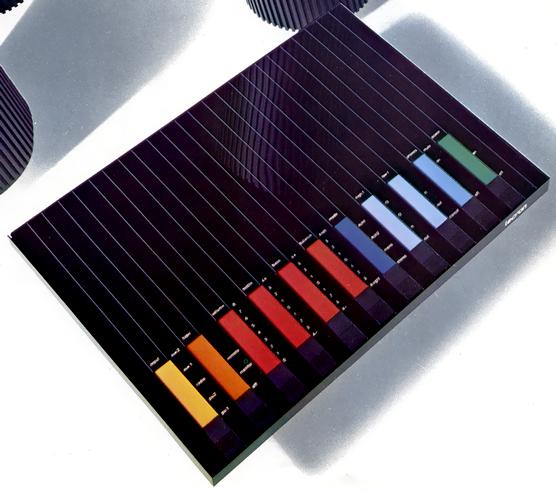
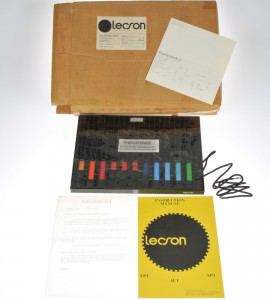

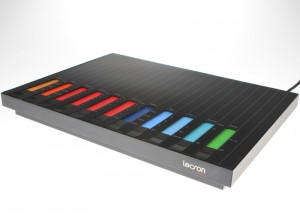

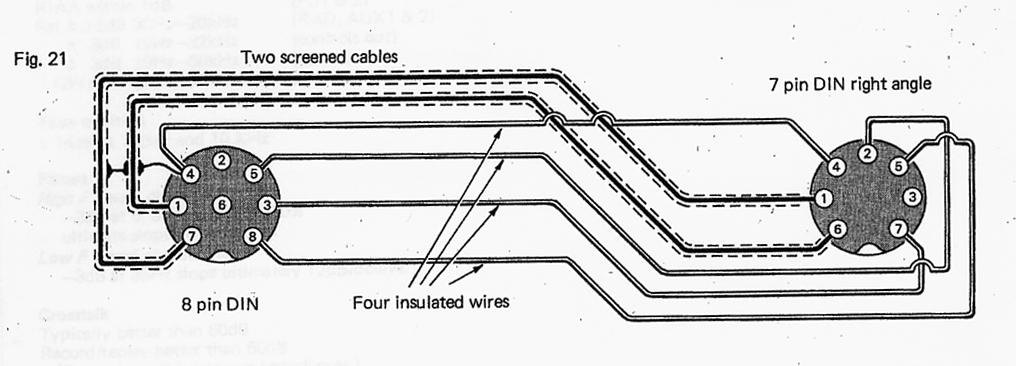
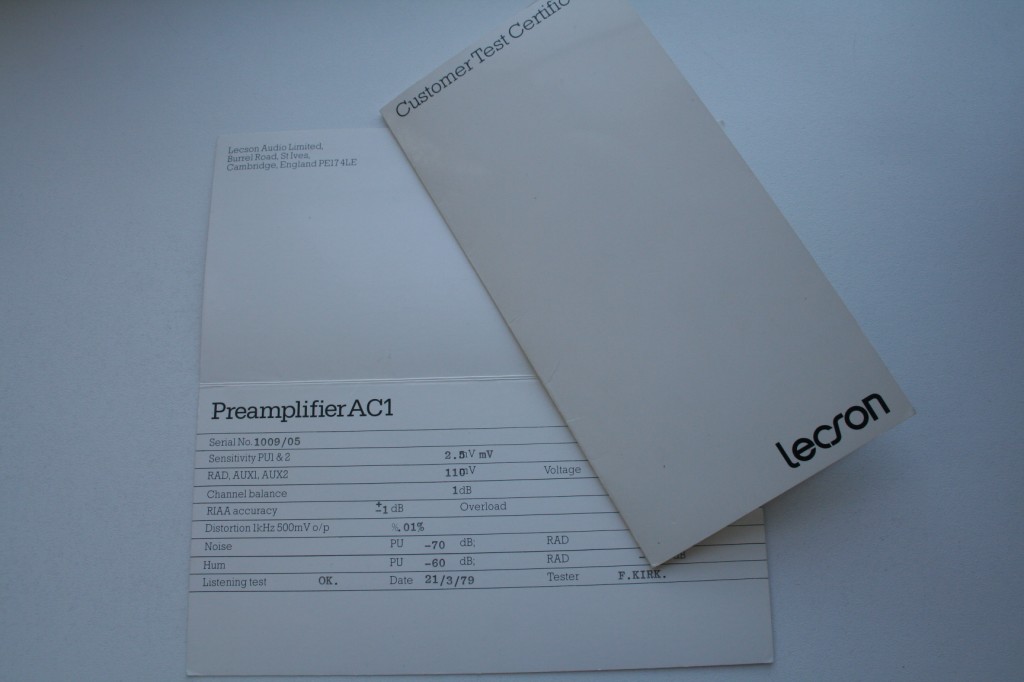
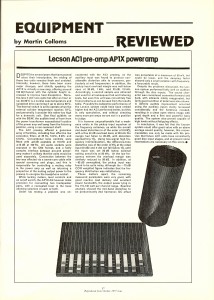
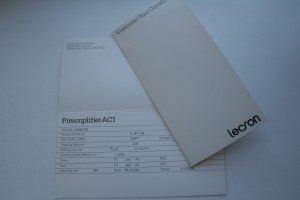
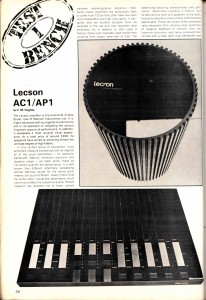
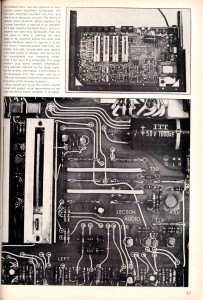


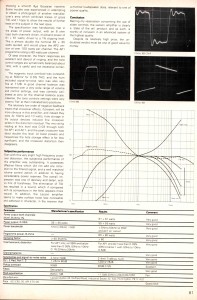
the cables are actually available from tim who makes very nice cables.
who makes very nice cables.
My sincere apologies to Tim! There are days, and this is obviously going to be one of them….
John
P.S. TIM’s cables are very impressive.
Would you please advise me about
*sound level when I connected with AP3 and AC1
together which “too loud” even volume position close to zero/min.
*Also,when I plugged in the power switch,very loud pop-noise
can be heard from the speakers which sooooo fearful…
Any idea to solve these problem.
* I would like to know how to buy the cable connectors showing in the
“DIN winkelstecker 01/02 in this page.??
I hope to hearback from you shortly.
Regards
Tad
Osaka,Japan 12/20/2011 22:10
1. Remember that the Aux input was designed long before CD players were invented. The easiest thing to do is install in line attenuators. Here’s one manufacturer- there are many.
http://www.rothwellaudioproducts.co.uk/html/attenuators.html. 10 dB and above recommended.
2. This is not normal. Sounds like DC from power supply capacitors?
3. One of our members (Tim) makes a wonderful interconnect cable that will solve all of your problems.
If the input is a CD then you need to put inline attenuation in the lead – the average CD player puts out 2v the lecson expects 0.1 0.15V max.
A loud pop when the AC1 is powered on with the AC1/3/1x already on happens with these, the original connection AC1-AP1 meant the AP powered up at the same time or later so was not usually heard. There is a Cap on the output chanels, this could be changed (normal is C115/6 (left/right) there is another on the cancel output ) The originals may be tantalum and these leak current, the final sound is switched through a FET (see the diagram). these can also leak current into the signal lead. More likely the act of this fet switching on is the pop though.
You could measure and replace these, I suspect it will not have much effect. probably better to turn on the AP3 after the AC1
I fitted a Monster Cable power conditioner with sequential powering a few years ago and never looked back.
Looking for service aid (CD-ROM) for AC1 such as view of a foil side and part layout
facing each other since [phono] section (L-ch) of AC1 is not working at all.
Please advise me if anyone know the supplier of such a item asap.
Thank you
No layout guides exist as far as is known for any of the Lecson kit. A dead channel is often the Switching FET, though usually a distortion is heard. You need to scope the incoming signal to find where it stops. TR1 is suspect if the left channel is working on the other inputs. Check for bad resistors and dry joints, If this is an early one less than serial no 1300 according to the service manual then the board whilst double sided is not plated through hole but uses griplet pins between the sides. a resolder of all the pins is in order – prone to problems
I would welcome some advice on how best to repair an AC1
I have inherited a Lecson AC1 (s/n 1016-05) and an AP3 (s/n 8007-12). On powering them up for the first time, the right channel of the AC1 is misbehaving. Regardless of which input I use, or the settings of any other slider, I get the following performance from the right channel:
1 works all right for a short but variable time – usually 10 seconds or so
2 then goes to a very low volume (very occasionally it comes back on for a couple of seconds). This low volume is unaffected by the balance slider and will continue even when the slider is set to 100% left channel.
3 if the AC1 is turned off (but the source is still playing), the left channel stops but bizarrely, the right channel comes back to life for a few seconds and then continues to play quietly.
Does anyone have any idea what could be causing this? The magnets? The reed switch? The FET Transistors? (I am a structural engineer not an electronic one so don’t really know what I am talking about)
And does anyone know of anyone that might be competent to repair the AC1?
Thanks
The AC1 and AP3 are repairable but to be honest the AC1 particularly is a job for a specialist. There are aspects of the design which are unique to this preamp and only those who have successfully worked on the kit before will know what they are doing. The AC3 is less of a special item but both would suit an electrical engineer! There are two people in the UK I would trust with my Lecson kit but the protect the innocent I will give you the names on a PM. There is no secret about them but you might be interested in my observations.
If this is useful to you, please get in touch.
Cheers,
Tim
I have AC 1 and AP 1 that have been in store for many years. I had one channel down twenty years ago and having now switched on again after all these years the problem remains. I understand you may have a contact who could help.
Look forward to your reply,
Regards,
David Banting
Hi Tim, I’m new here. New owner of AC1 and AP3. How do I get in touch with you to get one of the above mentioned cables? Also is there anywhere where the serial numbers for AP3 and AP3 mk II are shown – not sure which one I have. (I will probably end up opening it up to find out anyway. Thanks.
Member Howard recommends Armstrong HiFi in London for Lecson repairs.
http://armstrongltd-eastlondon.co.uk/
A couple of years ago I had my AC1/AP1 repaired & serviced by Paul Holmes (ex Lecson service manager) at Meridian. I have the contact details if required, that’s assuming he’s still there. I found him very friendly and helpful.
Well all seems to be working
Been very busy with a printing project for the last 2 years so not been about on the forums. My lecson’s are fine and working well.
I’m organising and designing a feature for a design magazine article about the extraordinary and beautiful button and switch design. I’d love to include the Lecson AC1 pre-amp or a Lecson tuner in the photo-shoot. If anyone in the London-area knows of, or has one that we might be able to loan for the shoot I’d be really happy to hear from you. It does’nt have to be working, but should be in decent cosmetic conditional.
Thanks, Paul